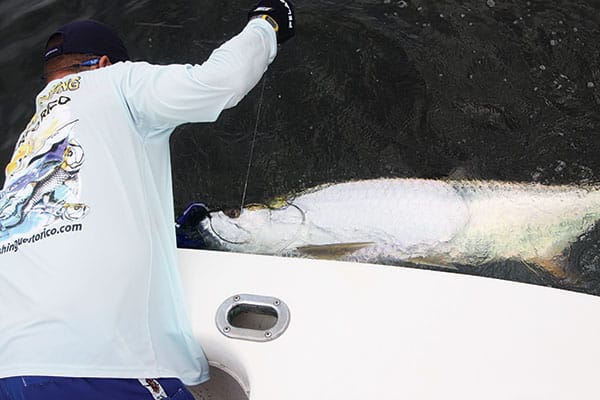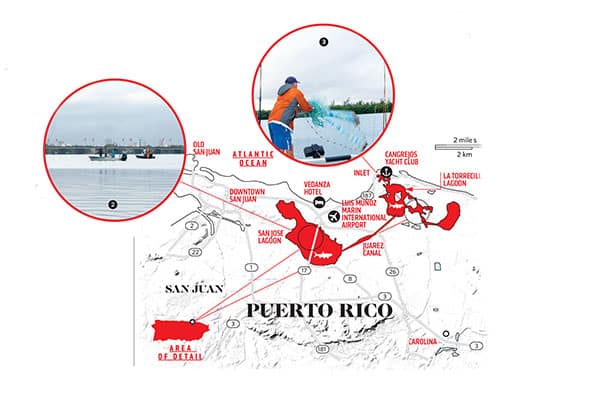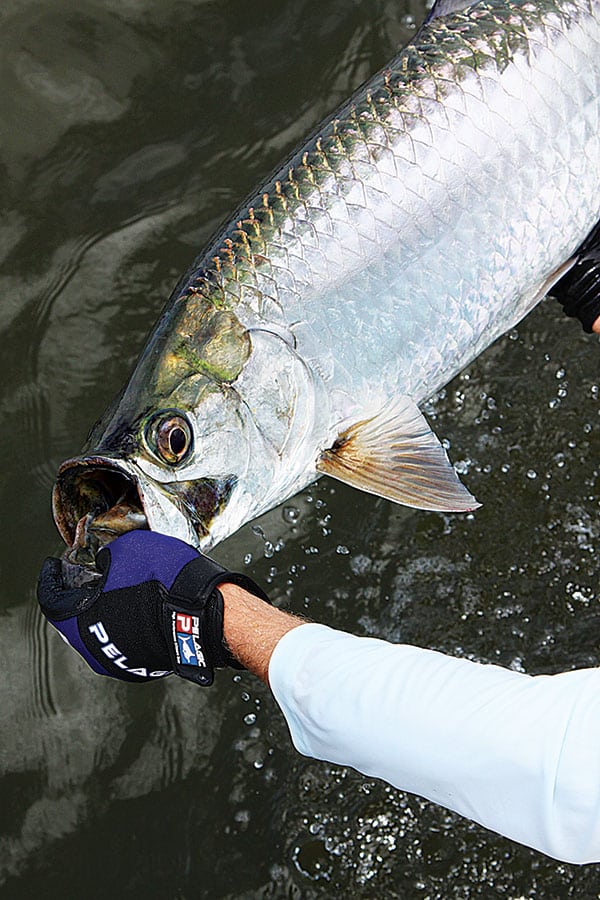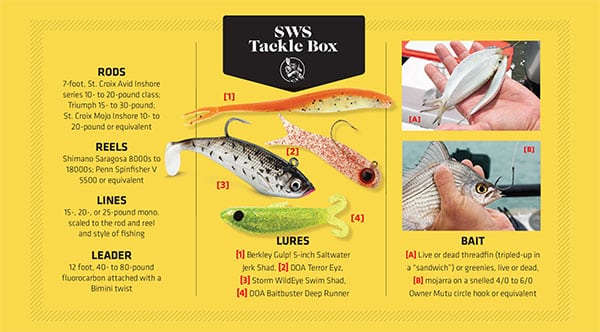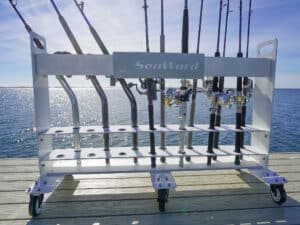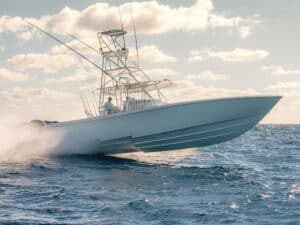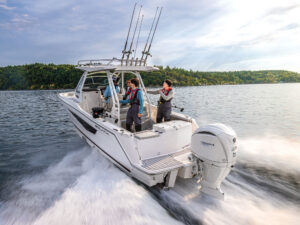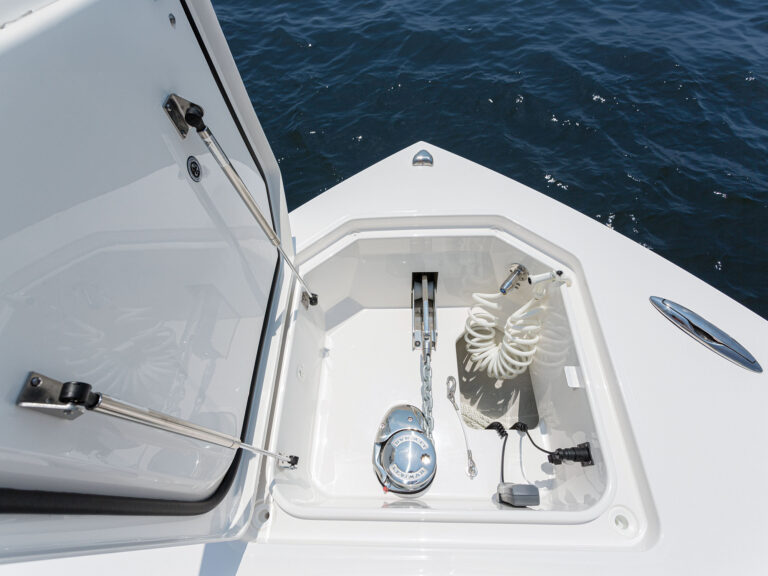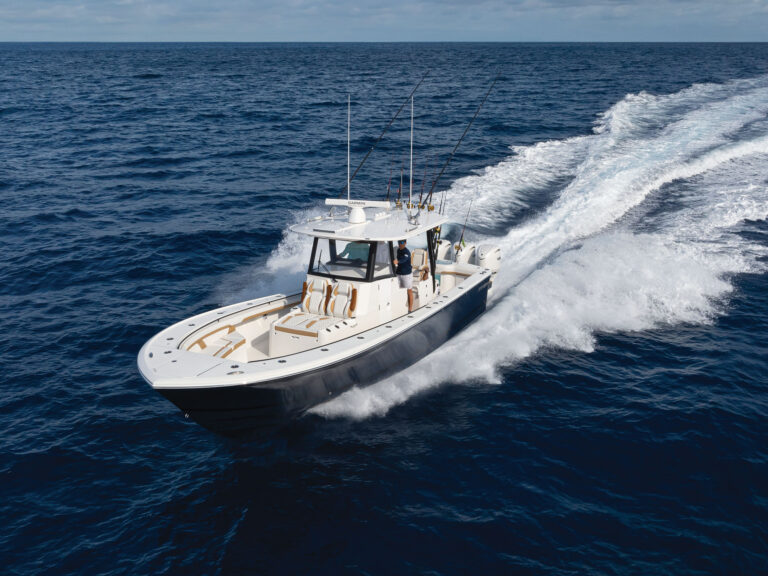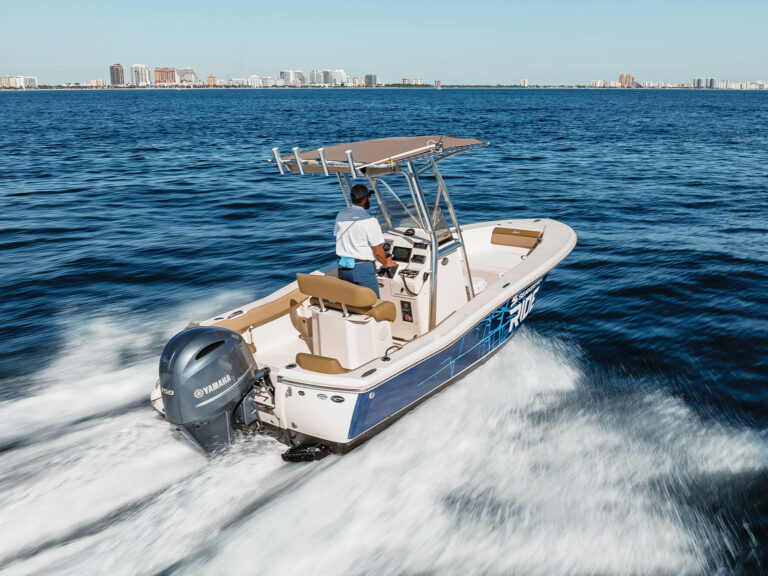As a passing rain shower subsided, I stepped onto the casting deck, rod in hand, willing a fish to strike. Like clockwork, the reel to my left screamed as the circle hook at the other end found its home into the jaw of our first triple-digit tarpon of the day. As we scrambled for the rod, the massive fish blasted out of the water with the San Juan skyline in the background. I realized this was indeed a special spot — and that you don’t always have to travel far to find big fish.
We flew into Puerto Rico last May to cash in on this productive urban tarpon fishery. Our guide, Capt. Juan Carlos Torruella, pioneered fishing the tarpon-rich backcountry of San Juan more than 25 years ago, and has since become an expert in fishing the waters of Puerto Rico both inshore and offshore. He is an IGFA representative for the area, and he recently earned recognition on Salt Water Sportsman‘s 2012 list of 50 Top Charter Captains.
Torruella started out fishing these waters in the mid-’80s aboard a stripped-down 11-foot Boston Whaler, casting MirrOlures to willing tarpon. “That was before I could even throw a cast net,” he says. Now the San Juan fishery is primarily a live-bait game.
Back then, Torruella also moved beyond the backcountry lagoons in pursuit of tarpon into the main San Juan harbor, but there it’s a different deepwater game, fishing heavy bucktail jigs in depths of 50 to 60 feet. He’s long since eschewed the harbor fishery, and fishes the Torrecilla and San Jose lagoons exclusively out of the Cangrejos Yacht Club aboard his 20-foot TwinVee power cat, Extremist.
Choosing Lagoons
San Juan’s backcountry tarpon grounds lie primarily within two lagoons — Torrecilla and San Jose — which are connected by an intricate system of bait-filled natural creeks and man-made canals. While city sounds and planes overhead provide a regular reminder that you are in a bustling metropolitan area, limited shoreline development makes way for long, unbroken strands of healthy mangroves and fishy surroundings.
Significant dredging in the 1960s of the Torrecilla and San Jose lagoons to harvest fill for civil projects has left some big holes — some up to 50 feet deep — that provide fish-attracting ledges and cool-water refuges in the otherwise shallow lagoons.
It was in one of these deep holes in the Torrecilla Lagoon that Torruella lost the biggest tarpon he’s ever seen here — a 200-plus-pound fish that wore through the leader after a four-hour battle.
“Three hours into the fight, he was in the 50-foot hole, fighting like a tuna, and after a 3½-hour fight, he jumped three times,” says Torruella. “It was crazy.”
His personal best tarpon that made it to the boat is a 160-pounder, caught in San Jose Lagoon. In the lagoon system, any fish over 100 pounds is considered a trophy, but 150-plus pounders are not infrequent during the spring and fall migrations.
While school-size tarpon, along with snook and jack crevalle, inhabit the lagoon system year-round and provide great sport on light tackle a mere 10-minute drive from downtown San Juan, the real attraction here is the big fish that roll in around February and hang around until mid-May, only to return for an encore in October.
Torruella splits his time between the two lagoons in search of finicky big tarpon, and either locale can run hot and cold. Water conditions vary significantly with rainfall (muddy water often means it’s time to pull out the artificials), and while low-oxygen cycles sometimes affect fish in San Juan Lagoon, tides are critical in the Torrecilla.
“The tide is the key to everything,” says Torruella. “When the tide’s really moving, the tarpon are really aggressive, then they tend to get fussy as it turns.”
Being there at the right time isn’t enough, however. You have to find the fish.
“You’re looking for the rolling fish and bait pods,” says Torruella. “Sometimes you’re also looking for birds. At certain times of year, the birds school up with the fish, especially in the morning.”
On our first morning out, we find ourselves running down a narrow mangrove-lined canal that leads to San Jose Lagoon. “Might want to sit down,” Torruella warns as he begins to stow rods on the approach to an impossibly low overpass. The oblong lagoon is bisected neatly by Teodoro Moscoso Bridge, and a deep crescent-shaped trench around the outside edge of the lagoon forms a sharp drop-off that helps to attract trophy tarpon.
We’d spend most of the first few hours dodging rain showers among a handful of other boats. Soon after the rain abated, however, the drag started to sizzle on one of the dead-bait rods in the gunwale holders, and soon enough, I was fighting a 100-pounder. We’d go on to jump more than a dozen fish ranging from 30 to 120 pounds over the next two mornings in steady action that Torruella still considered “slow.” His best single day saw him catch an incredible 56 tarpon for an island record that still hasn’t been beaten.
Live Options
When Puerto Rico’s tarpon are on the prowl, the sardines, threadfin herring, anchovies, mojarra (perch) and mullet that migrate through the lagoons are all potential victims. Live-baiting produces quick action in the early-morning hours, when pods of rolling tarpon are most active, with the key being to match the hatch when fish are feeding aggressively.
“I find that early in the morning, live bait is really the way to go,” says Torruella. “Once the sun comes up on the early-morning bite, the fish start patrolling the drop-offs and ledges,” he adds. “They start hugging the bottom and get fussy because of the warming water.”
When the fishing slows down, Torruella deploys a variety of dead baits fished on the bottom. Threadfin “sandwiches” consisting of three baits nose-hooked alongside one another and fished on the bottom proved deadly on our visit, as did cut chunks of mojarra.
Torruella swears by Owner Mutu circle hooks, and fishes all his baits — live and dead — on them. For big-fish rigs, he fishes 20- to 25-pound-test clear or green Ande mono with fluorocarbon leaders. Muddy water allows for heavier fluoro, up to 80 pounds, while in clear conditions or among finicky fish, Torruella may downsize to 40-pound leader.
When you hook up to a trophy fish here, the standard rules apply: “Bow” when it jumps to prevent pulled hooks, and apply pressure across the fish’s tail to keep it from pushing water across its gills or rolling and gulping air, which will always prolong the fight.
Stay Flexible
Soft plastics pay big dividends with San Juan’s tarpon. Anglers fish them anytime as an alternative to live or dead baits, but especially when the water gets muddy after a heavy rain.
DOAs or Slug-Gos in dark colors, especially root beer, work best in muddy conditions, and they need to be fished slowly. When tarpon are chasing bait, fish-mimicking colors cast into the pod usually earn a quick strike, with traditional gold- or silver-flake-and-black highly effective.
Torruella also figures that about 10 to 15 percent of his customers come to the San Juan backcountry for the singular thrill of casting flies to tarpon. Mullet patterns are effective on the big fish, and many fly anglers will throw Clouser minnows at the schoolies. As with the soft plastics, dirty conditions mean it’s time to pull out the dark patterns.
“When it rains and the water gets really muddy, working black flies slowly is a real killer,” says Torruella. “Black mullet-head patterns, Deceivers, Tarpon Bunnies — anything black will work.”
While inclement weather kept us from getting out after dark to sample that aspect of this fishery, night fishing in the lagoons is an exciting option, and something Torruella specializes in.
“The full moon is awesome,” he says. “That’s when they can get really active, at night.”

